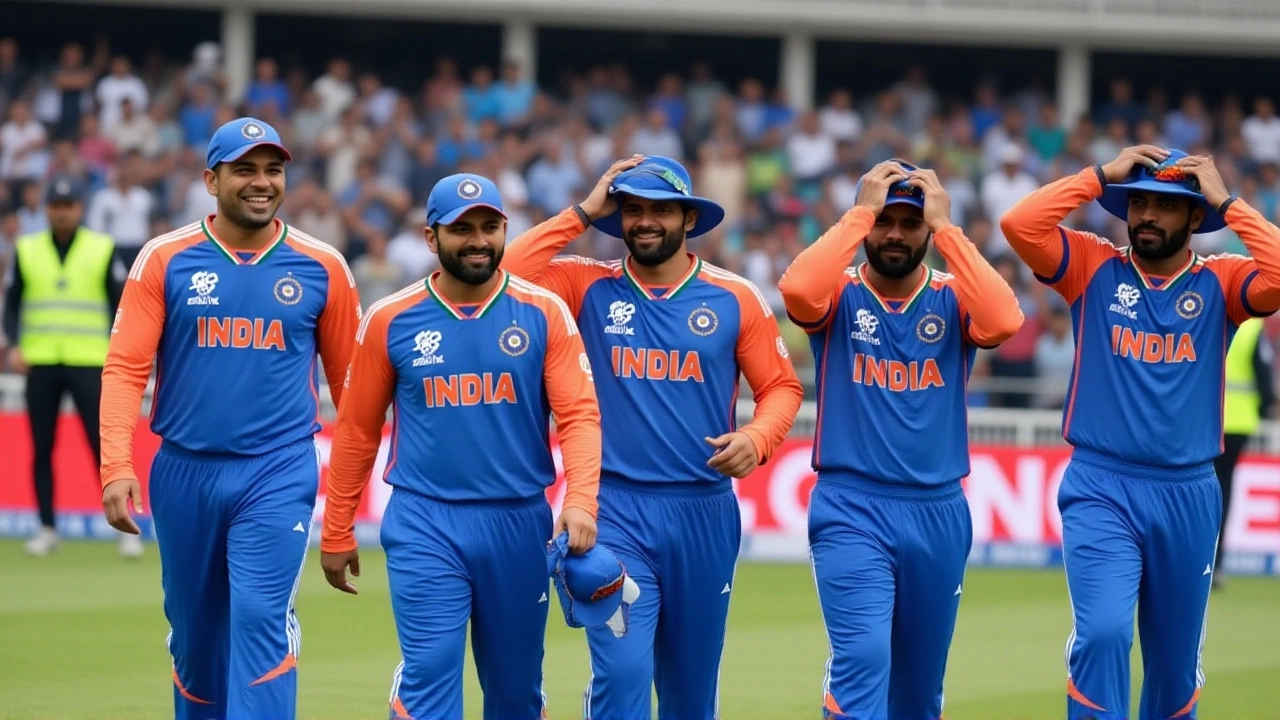
The first One Day International of the Australia vs India 2025 series is set to kick off under a cloud of uncertainty, as a 70% chance of rain could turn the game into a stop‑start affair. When Mitchell Starc and Jasprit Bumrah line up on the crease, weather might be the real third umpire. The match – Australia vs India 2025 ODI 1Optus Stadium – will begin at 11:30 AM local time on Sunday, 19 October 2025, in Perth, Western Australia. With the pitch historically favoring seam and swing, both captains are expected to field first, a tactical move that could pay off if the rain‑interrupted overs force a Duckworth‑Lewis‑Stern recalculation.
Why the weather matters
AccuWeather’s model shows a solid 70% probability of rain sweeping across Perth on match day, with showers likely lingering for most of the afternoon. That level of moisture does more than just wet the outfield – it adds a slick sheen to the surface, making the ball grip and swing more sharply. For a venue that already rewards pace, the added seam movement could turn the early powerplay into a bowler’s playground. Analysts from CricTracker argue that any delay will shrink the overs available, putting extra pressure on teams to score quickly or risk a sub‑par total.
Pitch profile and past numbers
Optus Stadium’s wicket has earned a reputation as a “fast‑bowler’s delight.” Since its inaugural ODI in 2022, the ground has hosted just three ODIs, each producing a modest first‑innings average of 183 runs. In fact, two of those three matches were won by the side chasing, with the highest successful chase sitting at a shy 153 runs. Australia’s recent outings here have been bleak – bowled out for 152 in 2023 and 140 in 2024 – underscoring the challenges batters face on a surface that offers extra bounce and lateral movement.
Because India has never played an ODI at this venue, the Indian camp enters with a knowledge gap. Their coaching staff, led by Rahul Dravid, will have to rely on video analysis and practice sessions to gauge how the pitch behaves under wet conditions.
Team strategies and key players
On the Australian side, Andrew McDonald will likely lean on his seasoned pacers – Mitchell Starc and the ever‑reliable Josh Hazlewood – to exploit the seam‑friendly conditions. Starc’s ability to swing the new ball and generate late outswing could be decisive, especially if the match is shortened.
India’s game plan, according to former BCCI analyst Amitabh Mukherjee, will hinge on Jasprit Bumrah. Bumrah’s knack for bowling pinpoint yorkers and delivering variations off a moist surface makes him a natural weapon when rain interrupts rhythm. The Indian batting lineup, featuring the likes of Rohit Sharma and Virat Kohli, will need to adapt quickly, perhaps opting for a more aggressive start to avoid a low‑scoring scenario.
Both Cricket Australia and the Board of Control for Cricket in India (BCCI) have released statements acknowledging the weather risk, emphasizing player safety and the possibility of a reserve day if the match is washed out.

What the result could mean for the series
If rain forces a reduced‑overs contest, the team with the sharper death‑over bowling will likely take the edge. A low total on a bowler‑friendly pitch could also swing momentum toward Australia, who have struggled to post competitive scores at this ground. Conversely, a successful chase by India would cement their confidence heading into the next venue – the WACA Ground in Perth’s suburbs – where conditions are expected to be dryer and more batting‑friendly.
The psychological impact cannot be overstated. Winning a rain‑marred opener could give the victorious side a morale boost, while the loser might find themselves playing catch‑up in the remaining four matches of the bilateral series.
Looking ahead: next venues
- Second ODI – WACA Ground, Perth (20 Oct): Typically drier, with a flatter track that favours spin.
- Third ODI – Melbourne Cricket Ground (23 Oct):
- Ground known for high‑scoring games; swing less of a factor.
- Fourth ODI – Sydney Cricket Ground (27 Oct):
- Fast outfield, but pitch can deteriorate quickly.
- Fifth ODI – The Gabba, Brisbane (31 Oct):
- Traditionally bowler‑friendly, but with a lower rain risk.
Each venue will test a different facet of both squads, making the opening encounter at Optus Stadium a critical barometer for adaptability.
Frequently Asked Questions
How likely is the match to be abandoned due to rain?
AccuWeather gives a 70% chance of rain on 19 October in Perth, with showers expected to last most of the day. While a complete abandonment is still unlikely, interruptions are almost certain, and the Duckworth‑Lewis‑Stern method will probably come into play.
Why is the pitch at Optus Stadium considered difficult for batters?
The surface is built on a blend of native Western Australian soil that produces extra bounce and lateral seam movement. Historically, only two of the three ODIs held here have seen teams chase successfully, and average first‑innings scores hover around 183 runs, underscoring the batting challenges.
Which players are expected to dominate with the ball?
Australia will likely lean on Mitchell Starc for swing and bounce, while India’s ace, Jasprit Bumrah, is favored to exploit the damp conditions with his precise yorkers and variations.
What impact could a rain‑affected result have on the series?
A win in a reduced‑overs match would give the victor a psychological edge heading into the next four ODIs, where conditions vary widely. Conversely, a loss could force the defeated side to chase higher totals in more batting‑friendly venues.
When and where is the next ODI in the series?
The second ODI is slated for 20 October 2025 at the WACA Ground, also in Perth. That venue typically offers drier conditions and a flatter wicket, favouring a more balanced contest between bat and ball.